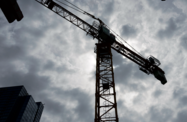Reverberations are expected in the Philippine cement industry from the $54bn planned merger of Lafarge and Holcim as the two companies plan to restructure their operations in the Philippines which could unravel an even bigger shake-up of the local industry.
The two firms' local subsidiaries, Lafarge Republic Inc. (LRI) and Holcim Philippines Inc. (HPI), issued statements on July 7 saying they were exploring the combination of their businesses and reviewing their structures after their parent companies, two of the world’s largest cement producers, unveiled their merger plans in April.
“It is contemplated that such a combination may create synergies and opportunities to further grow the business in the robust Philippine market with benefits to all stakeholders,” HPI said in a statement to the stock exchange.
These synergies are expected to include the sale of a number of assets currently held by LRI and HPI, with a final decision likely in the coming months.
Prices to spiral
This comes at a time when the cement industry in the Philippines is experiencing a sales boom, thanks to government spending on public works, strong investments in real estate, and major reconstruction work after a series of natural disasters, with price rises likely in the coming years.
Cement sales increased to 5.2m tonnes in the first quarter of 2014, a 8.6% jump from the same period a year ago which is steeper than the 6% annual growth recorded in 2013 when sales totalled 19.4m tonnes, according to data from the Cement Manufacturers Association of the Philippines (CEMAP).
With the government apparently committed to maintaining or even stepping up its public works programme, demand is set to grow further. Greater investment in housing from both public and private sectors, and a sharp rise expected in commercial and retail construction are also likely to boost consumption. But there are worries prices could spiral out of control.
New players
With demand forecast to hit 27m tonnes by 2017, producers are already rolling up their sleeves to expand plant capacity.
A number of firms have already announced new investments, and total capacity is set to reach more than 38m tonnes by 2017 with CEMEX Philippines Group of Companies, Eagle Cement, Northern Cement Corp., Pacific Cement Corp., San Miguel Corp. and Taiheiyo Cement Philippines all looking to expand.
If capacity outstrips demand, there could even be an opportunity to export the surplus.
At the same time, the Philippines will feel the brunt of the mega-merger. Lafarge’s Bulacan, Norzagaray, and Iligan plants are tipped to go on sale as part of a $6.8bn global sell-off foreseen under the merger, with assets in Hungary, Romania, Serbia, Britain, Canada, Mauritius, and Brazil also expected to go under the hammer.
The sale of the Philippines assets would, however, open the door for new players to tap into the market, or allow the existing operators to expand capacity just in time for the sales boom.
Both Holcim and Lafarge have profitable operations in the country. Holcim posted a net profit of $38.4m in the first quarter of 2014, up nearly 17% year-on-year, while Lafarge’s profit climbed 4% to $25.3m in the same period.
Rising demand
For now, worries of a cement shortage are dominating the agenda. In early July, House Deputy Minority Leader Rodolfo Albano III said government regulatory agencies needed to act to avert any crisis in cement supply to ensure the smooth implementation of vital infrastructure projects.
Agencies such as CEMAP have assuaged some fears. While some regions may experience shortages, there is currently a comfortable buffer at the national level to accommodate the increase in demand, at least in the short term with the industry operating at just 69% capacity in 2013.
“The combined increased capacity of the cement firms in the Philippines is more than sufficient to meet rising demand,” Ordoñez told local media. “Imported cement is not necessary, especially if this exposes us to the risk of getting substandard cement which poses danger to life and safety. This cannot be easily addressed because the cement supply source is outside the country,” he added.
Moreover, a forecast increase in cement plant capacity expansion will meet the increased domestic demand for cement over a four-year period covering 2014-2017 according to a study by Prof Antoinette Rosete of University of Santo Tomas, quoted in local media.
Follow Oxford Business Group on Facebook, Google+ and Twitter for all the latest Economic News Updates. Or register to receive updates via email.

